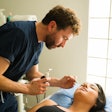Dear DrBicuspid Member,
With the use of cone-beam CT (CBCT) in dentistry on the rise, government agencies and trade groups are moving to issue guidance on the appropriate use of this 3D imaging modality.
Last week the American Academy of Oral and Maxillofacial Radiology and the American Association of Endodontists issued a joint position statement on the use of cone-beam CT in endodontics, and this week the U.K. Health Protection Agency -- the official adviser to the U.K. government on the health effects of radiation -- published a new radiation protection guidance for dental practitioners using cone-beam CT. Read more by visiting the Imaging & CAD/CAM Community.
Meanwhile, in Cosmetics Community news, the science on the incidence of bisphosphonate-related osteonecrosis of the jaw remains murky, and the jury is still out -- literally -- on hundreds of lawsuits filed against manufacturers of bisphosphonate drugs. But a new study in the Journal of the American Dental Association has found that occurrences of the condition are rare in patients receiving once-yearly infusions of 5 mg of zoledronic acid (Zometa). Click here to read more.
And while low reimbursement rates are a barrier for many orthodontists when it comes to treating Medicaid patients suffering from malocclusion, what about the clinical and psychosocial burdens on those patients who go untreated? Researchers from the University of Washington recently examined the role of economics in orthodontic treatment decisions for Medicaid patients and developed a tool to evaluate the costs and effects of treating versus not treating them. Read more.
Finally, don't miss out on your chance to nominate dentistry's best and brightest for the second annual DrBicuspid Dental Excellence Awards! Today's the last day, and your input is invaluable. Just click here or go to dentalexcellenceawards.drbicuspid.com to submit your nominations before midnight PST tonight.















